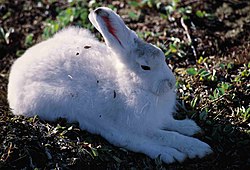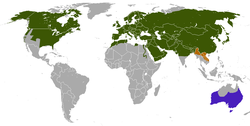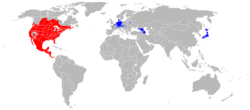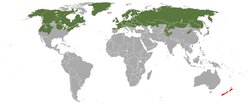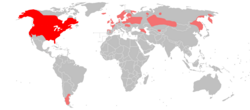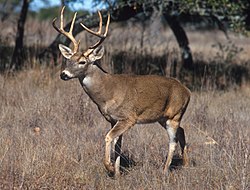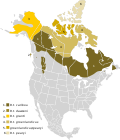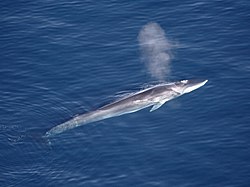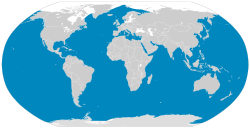| Photo | Names
(English / Scientific) | IUCN Status | Notes | Range Map |
|---|
| Family Sciuridae |
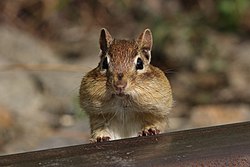 | Eastern chipmunk
Tamias striatus | LC | |  |
 | Least chipmunk
Tamias minimus | LC | |  |
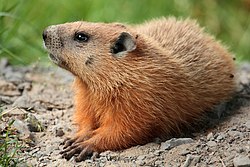 | Groundhog
Marmota monax | LC | |  |
 | Eastern gray squirrel
Sciurus carolinensis | LC | The Eastern gray squirrel has been introduced to various locations in western North America, England, Scotland, Ireland, Italy and South Africa. [3] |  |
 | American red squirrel
Tamiasciurus hudsonicus | LC | |  |
 | Southern flying squirrel
Glaucomys volans | LC | This species is likely to be designated threatened or vulnerable by the MFFP. [5] |  |
 | Northern flying squirrel
Glaucomys sabrinus | LC | |  |
| Family Castoridae |
 | North American beaver
Castor canadensis | LC | Introduced to Anticosti Island in 1890, in the Haida Gwaii archipelago, in Finland (1937), in the Kamchatka peninsula, in Poland, in Tierra del Fuego (1948), in Argentina and in France (1970s). [13] [2] [3] |  |
| Family Cricetidae |
 | Deer mouse
Peromyscus maniculatus | LC | This species occupies a large part of North America and is abundant. It is found in a great variety of habitats. Its swimming abilities have allowed it to colonize several islands. [3] |  |
| | White-footed mouse
Peromyscus leucopus | LC | |  |
 | Southern red-backed vole
Myodes gapperi | LC | |  |
 | Eastern heather vole
Phenacomys ungava | LC | The taxonomy of this species is subject to controversy. Some consider P. ungava as an integral part of P. intermedius. [3] |  |
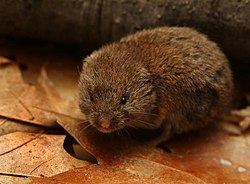 | Woodland vole
Microtus pinetorum | LC | Present only in southern Estrie and Montérégie. The MFFP considers this species likely to be designated threatened or vulnerable. [4] COSEWIC considers the status of this species as special concern. |  |
 | Meadow vole
Microtus pennsylvanicus | LC | Extensive distribution. Present throughout Quebec. [3] |  |
 | Rock vole
Microtus chrotorrhinus | LC | This species is likely to be designated threatened or vulnerable by the MFFP. [4] |  |
 | Muskrat
Ondatra zibethicus | LC | Introduced to Anticosti Island in 1930. |  |
 | Southern bog lemming
Synaptomys cooperi | LC | This species is likely to be designated threatened or vulnerable by the MFFP. [4] |  |
 | Northern bog lemming
Synaptomys borealis | LC | |  |
 | Ungava collared lemming
Dicrostonyx hudsonius | LC | Endemic to the Quebec-Labrador peninsula. |  |
| Family Muridae |
 | Brown rat
Rattus norvegicus | LC | Originally from East Asia, the Brown rat has colonized all continents except Antarctica. It is estimated to have appeared in North America around 1750. Distribution in northern regions is fluctuating given that winter cold often decimates populations, but these are constantly renewed with the reintroduction of new individuals via maritime transport. [3] |  |
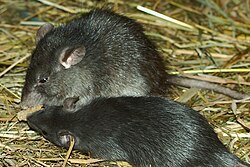 | Black rat
Rattus rattus | LC | Originally from Asia, like the Brown rat, the Black rat has colonized all continents except Antarctica via maritime transport. In Quebec, it is found only in the Port of Montreal where its presence is increasing. |  |
 | House mouse
Mus musculus | LC | Originally from the Old World, the House mouse was introduced to Canada during the 17th century. | 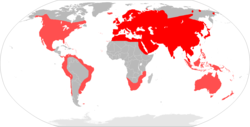 |
| Family Dipodidae |
 | Meadow jumping mouse
Zapus hudsonius | LC | |  |
 | Woodland jumping mouse
Napaeozapus insignis | LC | |  |
| Family Erethizontidae |
 | North American porcupine
Erethizon dorsatum | LC | |  |








































